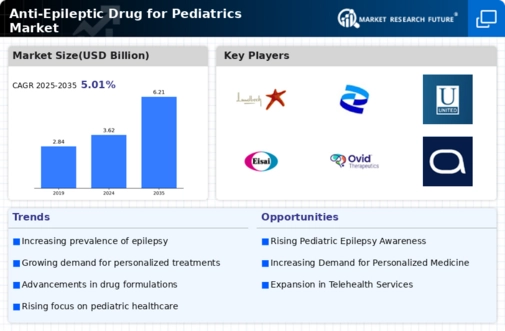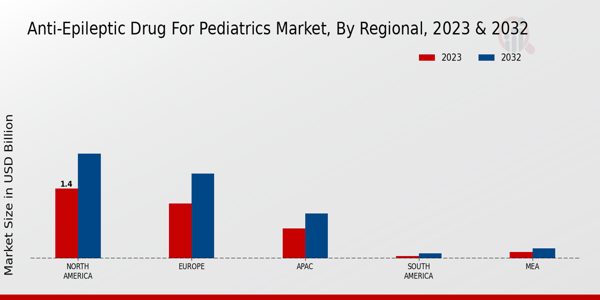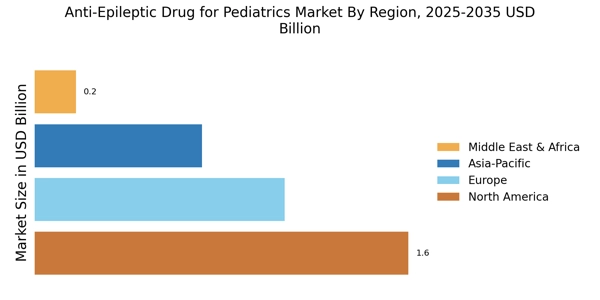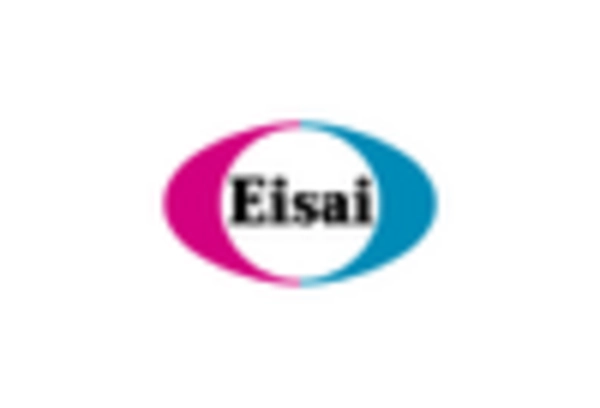Advancements in Drug Formulation
Innovations in drug formulation are significantly influencing the Anti-Epileptic Drug for Pediatrics Market. Recent advancements have led to the development of more palatable and easier-to-administer formulations, such as liquid suspensions and chewable tablets, which are particularly appealing for pediatric patients. These formulations not only enhance adherence to treatment regimens but also improve the overall efficacy of the medications. The introduction of novel delivery systems, such as transdermal patches, may also emerge as a potential trend, offering alternative routes of administration. As pharmaceutical companies continue to invest in research and development, the availability of diverse formulations is likely to expand, catering to the specific needs of children with epilepsy.
Increased Awareness and Education
The growing awareness and education surrounding pediatric epilepsy are driving the Anti-Epileptic Drug for Pediatrics Market. Initiatives aimed at educating parents, caregivers, and healthcare professionals about the condition and its management are becoming more prevalent. This heightened awareness is likely to lead to earlier diagnosis and treatment, which could increase the demand for anti-epileptic medications. Additionally, educational campaigns that focus on the importance of adherence to prescribed therapies may further enhance market growth. As more stakeholders become informed about the complexities of pediatric epilepsy, the need for specialized anti-epileptic drugs tailored to children is expected to rise, thereby positively impacting the market.
Rising Incidence of Pediatric Epilepsy
The increasing prevalence of pediatric epilepsy is a primary driver for the Anti-Epileptic Drug for Pediatrics Market. Recent studies indicate that epilepsy affects approximately 1 in 100 children, leading to a growing demand for effective treatment options. This rise in incidence necessitates the development and availability of anti-epileptic drugs specifically formulated for younger patients. As awareness of pediatric epilepsy expands, healthcare providers are more likely to seek specialized medications, thereby propelling market growth. Furthermore, the need for tailored therapies that address the unique physiological and developmental needs of children is becoming increasingly recognized, which could further stimulate the market for anti-epileptic drugs designed for pediatric use.
Growing Investment in Pediatric Healthcare
The rising investment in pediatric healthcare is a significant driver for the Anti-Epileptic Drug for Pediatrics Market. Governments and private organizations are increasingly allocating funds to improve healthcare services for children, including the development of specialized medications. This investment is likely to enhance research and development efforts focused on pediatric epilepsy, leading to the introduction of new anti-epileptic drugs. Furthermore, as healthcare systems prioritize pediatric care, the availability of resources for training healthcare professionals in managing childhood epilepsy is expected to improve. This could result in better diagnosis and treatment, ultimately driving demand for anti-epileptic drugs tailored for pediatric patients.
Regulatory Support for Pediatric Drug Development
Regulatory bodies are increasingly providing support for the development of pediatric medications, which is a crucial driver for the Anti-Epileptic Drug for Pediatrics Market. Initiatives such as the Pediatric Research Equity Act encourage pharmaceutical companies to conduct studies specifically in pediatric populations. This regulatory framework not only facilitates the approval of new anti-epileptic drugs but also incentivizes research into existing medications for pediatric use. As a result, the market is likely to see a surge in the number of approved anti-epileptic drugs that are safe and effective for children, addressing a critical gap in treatment options.



















Leave a Comment